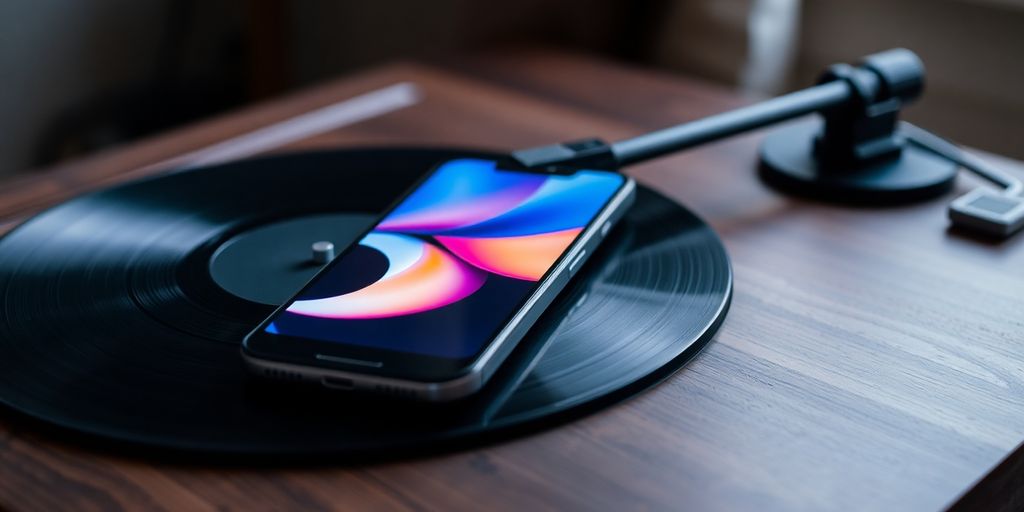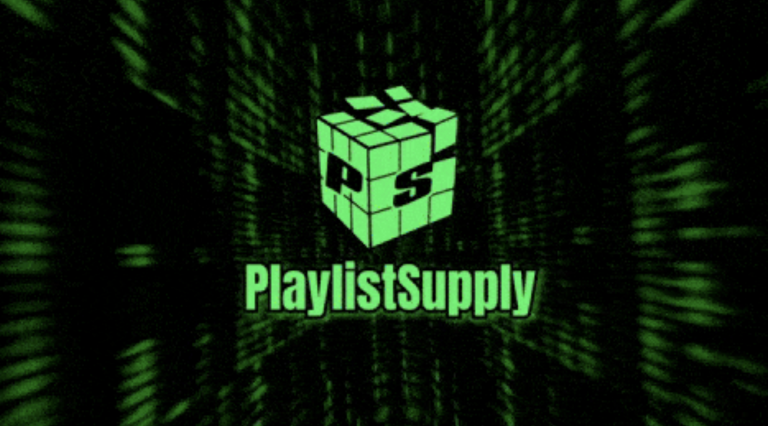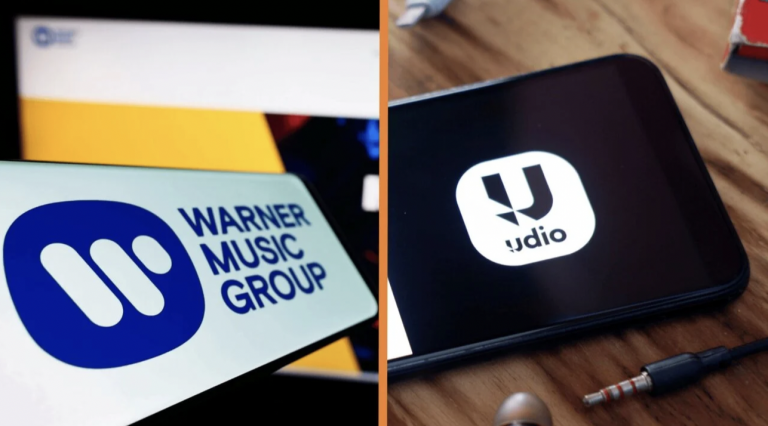
Remember Google Play Music? For a while, it was a big deal for lots of people who loved music. It changed how we listened to songs, especially with its cloud features. Even though it’s not around anymore, its impact on streaming music and how Google handles music is still pretty clear. Let’s take a look back at what made Google Play Music special and how it shaped things for what came next.
Key Takeaways
- Google Play Music was a pioneer in cloud-based music storage, letting users upload their own songs.
- It offered a mix of personalized radio, curated playlists, and integrated podcasts.
- The platform helped users find new music and worked well on different devices.
- Google Play Music eventually transitioned into YouTube Music, moving users and features over.
- Its legacy includes showing the way for cloud music and influencing today’s streaming services.
The Genesis of Google Play Music
Early Days and Vision
So, Google Play Music… where did it even come from? Back in the day, before everyone was streaming everything, Google had this idea to let people store their own music in the cloud. It wasn’t just about selling songs; it was about giving users control over their existing music libraries. The initial vision was to create a central hub for all things music, accessible from anywhere. It was a pretty novel concept at the time, especially compared to just buying CDs or downloading MP3s and keeping them on your computer.
Integration with Google Ecosystem
One of the smartest things Google did was tie Play Music into their existing ecosystem. Think about it: you already had a Google account, probably used Gmail, maybe even had an Android phone. Suddenly, your music library could be linked to all of that. It made things super convenient. It wasn’t just a standalone app; it was part of a bigger network. This integration meant:
- Easy sign-up and access
- Seamless syncing across devices
- Potential for cross-promotion with other Google services
The integration with the Google ecosystem was a strategic move that gave Google Play Music a significant advantage in terms of user acquisition and retention. By leveraging existing user accounts and services, Google made it incredibly easy for people to adopt and use the platform.
Initial Feature Set
When Google Play Music first launched, it wasn’t trying to do everything at once. It focused on a few core features, and honestly, that’s what made it so appealing. You could upload your own music, stream it to your devices, and create playlists. Simple, right? But that simplicity was key. It wasn’t overloaded with features nobody would use. It was about giving people a straightforward way to manage and listen to their music. It was a solid foundation that they could build on later. It was a good start for Google’s search engine.
Key Features That Defined Google Play Music

Cloud Locker and Music Uploads
Google Play Music really stood out because it let you upload your own music. This meant you weren’t just stuck with what the streaming service offered. You could bring your whole library with you, even those obscure tracks you couldn’t find anywhere else. It was a big deal for people who had carefully built up their digital music collections over the years. I remember spending hours uploading all my old CDs so I could listen to them on my phone. It wasn’t always the fastest process, but it was worth it to have everything in one place.
Curated Radio and Playlists
Google Play Music had some pretty good radio stations and playlists. They weren’t always perfect, but they were a decent way to discover new music. The "I’m Feeling Lucky" radio station was a fun way to just throw something on and see what it came up with. Plus, the ability to create your own playlists was key. I spent ages making playlists for different moods and activities. It was cool how the service would suggest songs based on what you already had in your playlists. It wasn’t always spot-on, but it definitely helped me find some new artists I liked. It was a nice alternative to just endlessly scrolling through albums.
Podcast Integration and Discovery
Before podcasts were everywhere, Google Play Music actually had a pretty solid podcast section. It wasn’t as feature-rich as dedicated podcast apps are now, but it was convenient to have everything in one place. You could subscribe to your favorite shows and download episodes for offline listening. The discovery features were okay, but it was more useful if you already knew what you wanted to listen to. Still, it was a nice bonus to have podcasts right there alongside your music. It made it easy to switch between listening to music and catching up on your favorite shows. You could even listen on Google directly from the app.
User Experience and Community Impact
Personalized Music Discovery
Google Play Music really tried to get to know your taste. It wasn’t just about throwing random songs at you; it aimed to learn what you liked and suggest stuff you’d actually enjoy. I remember one time, it started recommending this obscure indie band, and I was hooked! It felt like the app understood me better than some of my friends, haha. The algorithms weren’t perfect, but they were surprisingly good at surfacing hidden gems. It was way more than just a music streaming service; it was like having a personal DJ.
Accessibility Across Devices
One of the best things about Google Play Music was how easy it was to use on pretty much any device. Whether you were on your phone, tablet, or computer, your music was always there. I could start listening to a playlist on my commute, then pick up right where I left off when I got to work. It just worked, and that’s what made it so great. No more messing around with transferring files or dealing with compatibility issues. It was a big deal back then, and it’s something I still miss about it. It was a true cross-platform experience, which is something not all services get right even today.
Community Engagement and Sharing
Google Play Music had some cool features for sharing music with friends. You could easily create playlists and share them, or even just send a song you thought someone would like. It wasn’t as social as some other platforms, but it was enough to feel like you were part of a community. Discovering new music through friends’ playlists was always a highlight. I remember making collaborative playlists for parties, and it was a fun way to get everyone involved in the music selection. It wasn’t just about listening alone; it was about sharing the experience with others.
I think one of the things that made Google Play Music special was that it felt like a personal music library, but with the added benefit of being able to share and discover new stuff with friends. It wasn’t just a streaming service; it was a way to connect with others through music.
The Evolution Towards YouTube Music
Strategic Shift in Google’s Music Strategy
Google’s decision to sunset Google Play Music in favor of YouTube Music wasn’t out of the blue. It was a calculated move to consolidate their music streaming efforts under a single, more recognizable brand. YouTube already had a massive user base and a strong association with music content, so it made sense to centralize music services there. The idea was to create a more unified experience, combining music streaming with video content. This shift reflected a broader trend in the industry towards video-centric music platforms.
Migration Process for Users
Moving users from Google Play Music to YouTube Music was… a process. Google provided tools to transfer libraries, playlists, and preferences. However, it wasn’t always smooth sailing. Some users experienced hiccups with their uploads, missing tracks, or changes in playlist organization. Despite the bumps, Google tried to make the transition as painless as possible, offering detailed instructions and support. It was a big change, and change is rarely easy, especially when it involves something as personal as your music library.
New Features in YouTube Music
YouTube Music brought some new things to the table. One of the biggest was the integration of YouTube’s vast video library, allowing users to easily switch between audio and video versions of songs. Other additions included improved discovery features, live lyrics, and a more personalized listening experience based on YouTube’s recommendation algorithms. While some features from Google Play Music didn’t make the jump, YouTube Music aimed to offer a more comprehensive and modern music streaming experience.
The transition to YouTube Music wasn’t universally loved. Some users missed the simplicity and features of Google Play Music, particularly the cloud locker functionality. However, Google has continued to update and improve YouTube Music, addressing user feedback and adding new features over time.
Google Play Music’s Enduring Legacy
Google Play Music might be gone, but it definitely left its mark. It wasn’t just another music app; it changed how many of us thought about owning and listening to music. It’s interesting to think about how much it shaped the streaming landscape we know today.
Pioneering Cloud Music Storage
Google Play Music was one of the first to really push the idea of storing your music in the cloud. This was a game-changer because it meant you could access your entire library from any device, without having to worry about storage space. Before that, we were all stuck syncing MP3s and managing local files. It was a hassle, and Google Play Music offered a much simpler solution. I remember when I first uploaded my collection; it felt like magic.
Influence on Streaming Services
Google Play Music’s features, like uploading your own music and creating custom radio stations, influenced other streaming services. A lot of what we see in Spotify, Apple Music, and YouTube Music can be traced back to what Google Play Music did first. It showed the industry that people wanted more than just access to a catalog of songs; they wanted control and personalization. It’s kind of like how this music player lets you listen to your own files without Wi-Fi – that’s the kind of control people appreciate.
Fond Memories of a Beloved Platform
Even though it’s gone, a lot of people still miss Google Play Music. It had a loyal following, and many users were sad to see it replaced by YouTube Music. There was something about its simplicity and the ability to combine your own music with streaming tracks that people really loved. It’s like when a favorite local store closes down; you might have other options, but it’s not quite the same. I still remember discovering new artists through its curated radio stations. Good times.
It’s easy to forget how revolutionary Google Play Music was at the time. It wasn’t perfect, but it pushed the boundaries of what a music service could be. It gave users a level of control and flexibility that was unheard of, and its influence can still be felt today. It’s a reminder that even services that don’t last forever can have a lasting impact.
Challenges and Competition Faced by Google Play Music

Intense Market Competition
Google Play Music entered a crowded arena. Think about it: Spotify, Apple Music, Pandora… all these giants were already battling it out for listeners. It wasn’t just about having a good service; it was about convincing people to switch from what they already knew and liked. And that’s a tough sell, especially when those other services had a head start and were constantly adding new features. The competition was fierce, and Google Play Music had to fight hard for every user.
Licensing and Content Acquisition
Getting the rights to stream music is a huge headache. You’ve got to negotiate with record labels, artists, publishers… it’s a complex web of agreements. And these deals aren’t cheap. Google Play Music had to spend a lot of money to build up its library and keep it stocked with the latest hits. Plus, different regions have different licensing rules, which meant that some songs might be available in one country but not in another. This made it hard to offer a consistent experience to users around the world. It’s a constant balancing act between cost, availability, and user expectations. Securing content acquisition was a constant battle.
Adapting to User Demands
What people want from a music service is always changing. One minute it’s all about curated playlists, the next it’s about podcasts, and then suddenly everyone wants lossless audio. Google Play Music had to keep up with these trends, adding new features and tweaking its interface to stay relevant. But sometimes, it felt like they were a step behind. For example, they were relatively late to the podcast game, and their social features never really took off. It’s a challenge for any company to predict the future, but in the fast-moving world of music streaming, it’s especially important to be agile and responsive.
Staying ahead of the curve in the music industry is like trying to catch smoke. User preferences shift constantly, and what’s popular today might be old news tomorrow. Google Play Music faced the challenge of not only keeping up with these changes but also anticipating them, a task that proved difficult amidst fierce competition and evolving technology.
Beyond Streaming: Google Play Music’s Broader Reach
Google Play Music wasn’t just about streaming. It had a few other tricks up its sleeve that made it more than just another music app. Let’s take a look at some of those.
Google Play Pass Integration
Google Play Pass is like a subscription service for apps and games on the Google Play Store. While Google Play Music wasn’t directly included as a standalone app within Play Pass, the subscription could indirectly benefit users. For example, some music creation or editing apps available through Play Pass could be used to enhance or modify music download tracks obtained through Google Play Music. It was more of a complementary thing than a direct integration, but still worth noting.
Gift Cards and Redemption Options
Google Play Music accepted Google Play gift cards as a form of payment. This was super convenient because you could get these gift cards at pretty much any store. It made it easy to give the gift of music, or for people without credit cards to still enjoy the service. You could load up your account with a gift card and then use that balance to pay for your Google Play Music subscription or buy albums and songs. It was a simple and accessible way to manage your music spending. I remember getting a Google Play gift card for my birthday one year and using it to buy a bunch of new albums. Good times.
Family Sharing Capabilities
One of the best things about Google Play Music was its family sharing feature. It allowed you to share your subscription with up to six family members. This meant everyone in the family could enjoy ad-free listening, offline downloads, and all the other perks of a Google Play Music subscription, without having to pay for individual accounts. It was a great way to save money and keep everyone happy. Setting it up was pretty straightforward, and it just made sense for families who all used Android devices. It’s something I really miss now that I’ve switched to a different service. I wish more services would offer such a generous family plan. It really made a difference.
Here’s a quick rundown of the benefits:
- Cost-effective for families
- Easy setup and management
- Ad-free listening for all family members
Conclusion
So, looking back, Google Play Music was a pretty big deal for a lot of us. It wasn’t perfect, sure, but it did some cool things, like letting you upload your own music collection. That was a game-changer for many. Even though it’s gone now, replaced by YouTube Music, its impact is still there. It helped shape how we listen to music online today. It was a step in the right direction, showing what a good music service could be. It’s a reminder that even when things change, the good parts stick around in some form.
Frequently Asked Questions
What exactly was Google Play Music?
Google Play Music was a music streaming service from Google. It let you listen to songs, upload your own music to the cloud, and even buy digital tracks. It was a big deal for music lovers who wanted their tunes everywhere.
When did Google Play Music first come out?
Google Play Music started in 2011. It was Google’s first big try at a music service, and it changed a lot over the years before YouTube Music took its place.
Is Google Play Music still around today?
Yes, Google Play Music is gone now. Google decided to move everything over to YouTube Music. All your music and playlists from Google Play Music were supposed to move to YouTube Music.
What is YouTube Music?
YouTube Music is Google’s new music service. It has music videos, official songs, albums, and lots of live performances. It’s meant to be the main place for all your music from Google.
How did users move their music from Google Play Music to YouTube Music?
Moving your music was pretty easy. Google gave users tools to move their songs, playlists, and uploads directly from Google Play Music to YouTube Music.
Why was Google Play Music so important?
Google Play Music was important because it showed how useful cloud music storage could be. It let people keep their music online and listen to it on any device. It also helped shape how other music streaming services work today.





